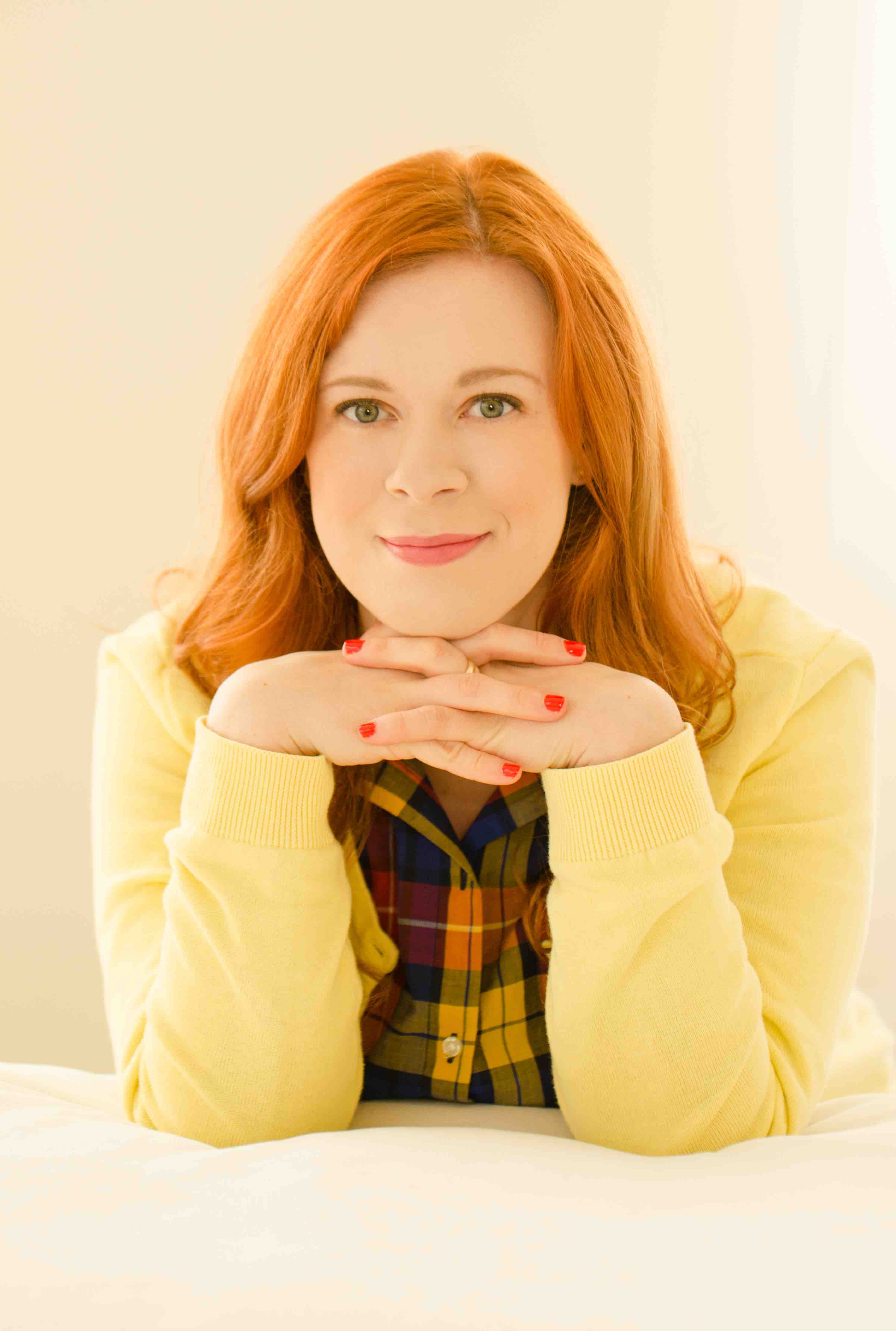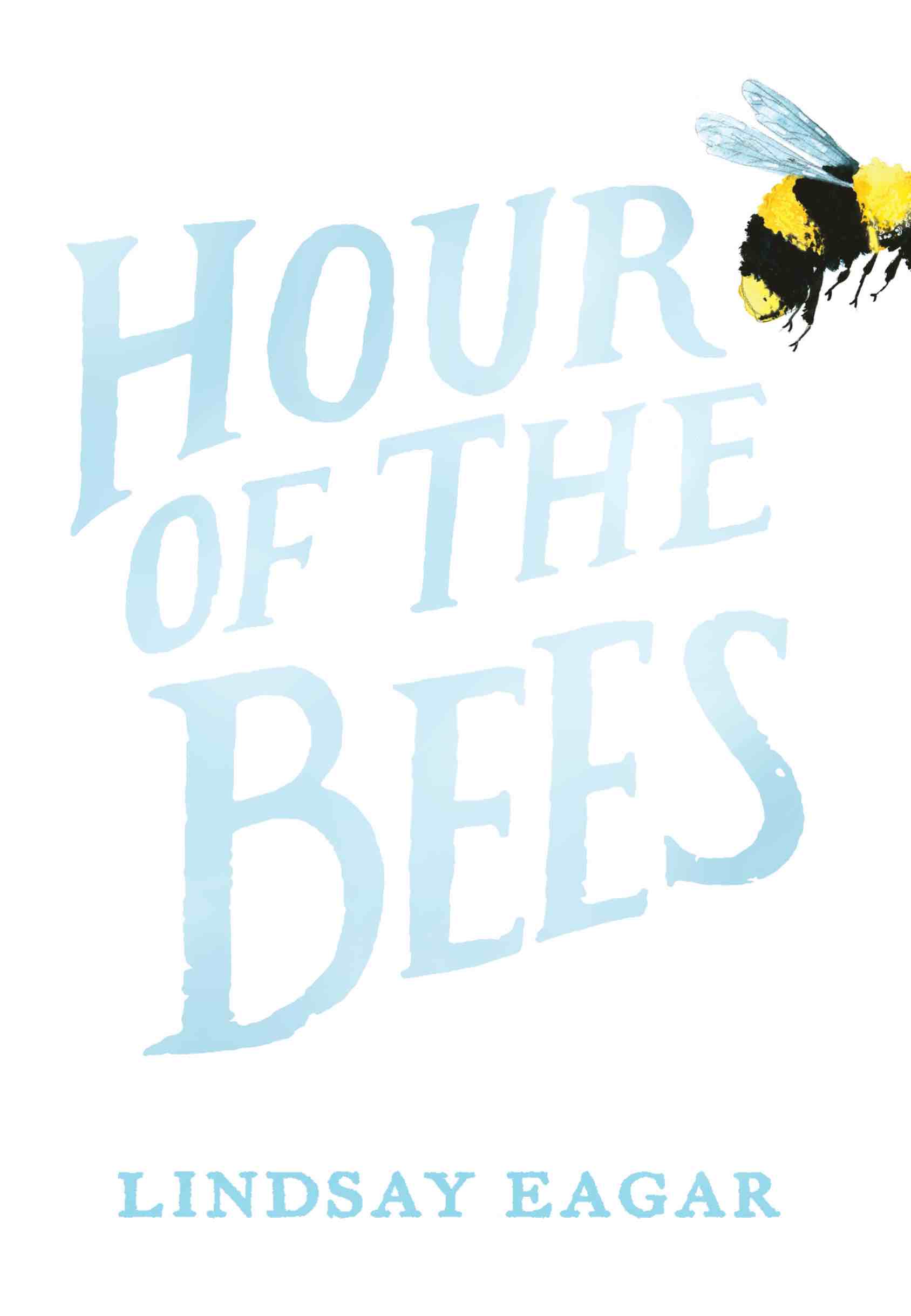 Lindsay Eagar’s debut novel, “Hour of the Bees,” follows 12-year-old Carol as she spends her summer on her grandfather’s ranch in the middle of the New Mexico desert. There’s something magical about her grandfather and the ranch, but Carol will only find it if she looks inside herself.
Lindsay Eagar’s debut novel, “Hour of the Bees,” follows 12-year-old Carol as she spends her summer on her grandfather’s ranch in the middle of the New Mexico desert. There’s something magical about her grandfather and the ranch, but Carol will only find it if she looks inside herself.
The following is a complete transcript of Lindsay’s interview with Cracking the Cover in advance of her novel’s release.
Why do you write?
I write because I exist. Because I read. Because I breathe. I write because that is the way I process the world around me, and, oh, what a magical world it is! Plants in South America, and creatures in the deepest parts of the sea, and rainstorms, and candy, and historic ship voyages, and the myths people have spun about death and love, and the pangs and joys of growing up… Things around me and things far away (or things that are completely impossible!) inspire me to weave stories. There’s never a shortage of beautiful and terrible things to draw from, and to write feels like a celebration of the beautiful and the terrible, every time I sit down to write.
Honestly, I’ve been stringing words into stories since I was very young, and the more I do it, the harder it gets. It gets harder because I get better, and the stories I choose to write become more and more personal and important to me. I write because I have something to say. I write, even if it’s just an echo back to myself.
But mostly I write because I love it.
Why specifically do you write for young readers?
This is a complicated question! I re-evaluate my reasons for writing for young readers almost every time I sit down to write, and that’s because it is a great privilege and a great responsibility. I used to think, “I only write the stories I want to write, and the industry decides where the books are shelved” but it’s a much more deliberate choice than that. Writing for children allows me to tear down walls between the real and the fantastical, and I can do it without any justification or explanation necessary. I can entertain. I can joke. I can write about the saddest, darkest moments of life without cynicism or sentimentality. I can write about unicorns and Bigfoot and bullies at school and have it all blend into something very grounded, very real.
Writing for children also allows me and my readers to time-travel. I time-travel when I write, because I draw on the experiences that shaped me when I was a kid, but I write with the perspective of an adult who can perhaps articulate the big picture context of those experiences. My readers can also time-travel. While my young readers are very much the target age for these childhood formative years, they are able to read the book as mirrors to their own lives, written by someone older and (hopefully) wiser. And my adult readers are able to zoom back to their own early years and relive them, just by cracking open the spine… Children’s literature is very special that way.
 I read that you wrote “Hour of the Bees” in roughly 10 days. Did you have a plan before you started writing?
I read that you wrote “Hour of the Bees” in roughly 10 days. Did you have a plan before you started writing?
Yes, I had a plan! My plan was to write something new and different, as quickly as possible, so as to stop the suffering caused by my previous manuscript, which was a completely failure. I had been working on a different middle grade book, and despite rewrite after rewrite, it wasn’t working. I knew it was time to trunk it and start fresh—a blank page, a blank mind. I woke up early on a June morning with a new notebook and nothing but a phrase of words, “hour of the bees,” which came to me one day when I was running. I was a single mother of a rambunctious three-year-old at the time, and for ten days we walked to the park, where I camped out in the shade of a tree and wrote. The story poured out of me like it already existed somewhere else, and I was just its receptacle. Ten days later, I finished it.
Within the first day, I had the entire story. I listened to Clint Mansell’s haunting score for The Fountain (a fantastic movie by Darren Aronofsky) and the whole thing came to me like a flash—a girl, stranded on a decrepit sheep ranch in the middle of the blazing New Mexican desert. A century-long drought. A rambling grandfather and the cruelty of dementia and age. All the little family dynamics that begin to grate when it’s a hundred degrees outside. Magic, or something like it, spotted just in the corner of your eye.
Most of the original pages are in the final book, just expanded and refined. Also, I listened to that soundtrack to the Fountain over two hundred times while I wrote and revised the book.
Though Carol is technically the main character, it feels as if she shares the billing with Serge. Was it difficult to switch between the two viewpoints?
It was very seamless to write, because the two pieces of the story—Carol’s and her grandfather’s—connect so organically. There were times in the revision process when I felt the stories about the tree and the lake (the grandfather’s viewpoints) were shinier and more entertaining to read than Carol’s, and other times when the opposite was true. I worked hard to make sure they were balanced, and that readers weren’t dragging through one of the narratives to get to the parts they liked.
Time is a key theme throughout. How do you measure time? Did that change after you finished “Hour of the Bees”?
Before I became a mother, I did not appreciate time. I let it just trickle away, minute by minute. This isn’t saying that all parents measure time with appreciation and all childless people do not; simply that it took my daughter to help me appreciate what eight hours is (a luxurious night’s sleep), or what five minutes is (a decent shower) or what one minute is (long enough to read a page or two) or what one second is (feels like an hour, if your daughter is falling off the pirate ship playground while you helplessly watch from the sidelines).If I’m speaking practically, yes, my gauge for measuring time changed after I finished the book, because time measurement in publishing is the industry’s greatest joke. Publishing is 99% waiting. Radio silence. A ne’er-budging inbox. But when things do happen, I feel like I can live inside of those moments for days.
Are you more like Serge or Rosa?
Well, since I have books that have traveled further than I have, my instinct is to say Serge. I am very attached to my home, my family, my daily routine. I don’t think of death as a kind of adventure, or release—I never want to leave.
But after the birth of my daughter, I had a real wake-up call. There were lots of things I wanted to accomplish (getting published was number one) and the clock was ticking. Like Rosa, I want to squeeze the juice from every day. I rarely rest. I work daily. I have enough writing projects to last for years, because I don’t want to come to the end of my life and feel like I still have stories inside that will die with me.
And writing allows me to be my inner Rosa. I can fly instantly anywhere—the desert of New Mexico, for example, with just a pen and paper. It’s the ultimate way to adventure—I make up my own worlds.
So maybe I’m a little of both. Maybe we all are.
Why bees?
Well, since the title came first, I knew I would incorporate bees into the story somehow, whether literally or metaphorically. I ended up doing both. The bees literally begin pestering my protagonist, Carol, as soon as she reaches her grandfather’s ranch, and she soon learns about Serge’s history with bees. But they also serve as a metaphorical counterbalance for the dry desert—amid such bleak conditions, the bees are the source of life. They pollinate, they make flowers bloom, and in my book, they are the bringers of water.
Magical realism straddles the line between the impossible and the believable, and yet I found myself accepting the world you created without question. How did you find that balance?
I think that credit goes to the readers! I’ve had some people who automatically believe the magic; I’ve had other readers who are happy that the more unlikely details could potentially add up to scientific soundness. I do love fantasy of all levels, but when I wrote this I knew it would never be a Big Epic Magic kind of story. The “magic,” if you want to call it that, is always very subdued—and I found it very easy to hold back, because seeing it all unfold through Carol’s eyes made even the tiniest magical moment seem huge.
The beauty with magical realism is we can all see what we want to see, and believe as far as our mind is willing to let us believe. So if you found the book particularly magical, congratulations! I think that means you will see the everyday magic that’s all around us.What are you working on now?
Remember that middle grade novel I trunked the night before I started Hour of the Bees? This will be my second book out with Candlewick in 2017. It’s called Race to the Bottom of the Sea, and it’s about the daughter of famous marine biologists who is kidnapped by a vicious pirate to retrieve his sunken treasure from the ocean floor. It’s also about death (again), and about regret, and grief, and the secrets we all keep. If Hour of the Bees was the book of my soul, Race to the Bottom of the Sea is the book of my heart. It’s exactly what ten-year-old Lindsay would have wanted to find on the shelves—colorful, romantic, and extremely nerdy.
Is there a book from your own childhood that still resonates with you?
I was definitely a big reader, so the list is long! But Roald Dahl’s books stand out as my most beloved growing up. My favorite book of all time is his Danny, the Champion of the World, though not many people have read it—it’s a bit quieter than his usual zany crazy books, but he still captures the tiny moments of childhood that are so delicate and so familiar. Plus, he has the best villains.
